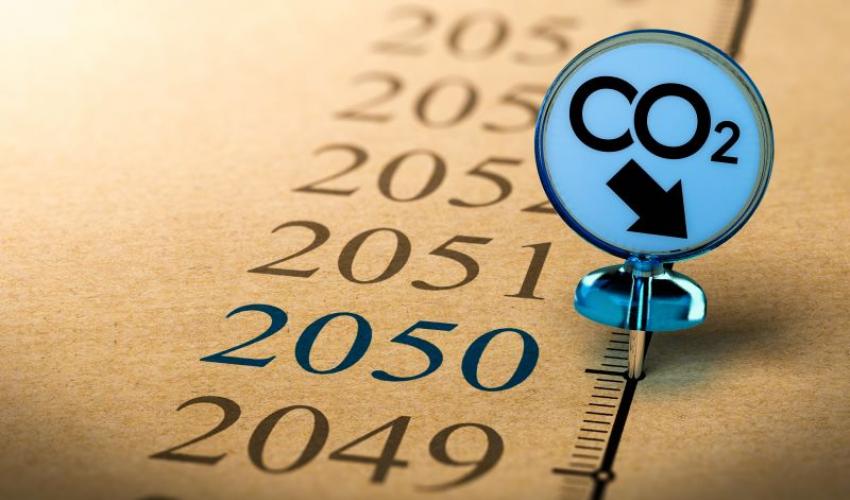
Reform Taxation to Cut CO2
A STUDY SHOWS THAT IT IS PRECISELY POLLUTING COMPANIES THAT PAY THE LOWEST TAXES, BECAUSE THEY TAKE ADVANTAGE OF THE TAX SHIELD OF DEBT FINANCING. FOR THIS REASON, WHEN DESIGNING POLICIES TO REDUCE CARBON EMISSION, GOVERNMENTS SHOULD RECONSIDER THE WHOLE SYSTEM OF CORPORATE TAXATIONby Luigi Iovino, Thorsten Martin, Julien Sauvagnat, Associate Professor at the Department of Economics, Assistant Professor at the Department of Finance, Associate Professor at the Department of Finance
Carbon emissions constitute a classic example of negative externality. Economic theory suggests that the optimal solution is to impose a global carbon tax or an equivalent quantity capping mechanism such as a cap-and-trade market. However, currently only 20% of global carbon emissions are covered by such climate change regulation (World Bank, 2018), and carbon prices in these regions are typically well below the estimated social cost.
Even in the absence of an explicit tax on carbon emissions, it may still be the case that existing corporate taxation schemes contain an implicit tax on polluting firms. We find that this is not the case. In fact, the opposite is true: Dirty firms pay on average lower taxes. We reach this conclusion by relating corporate taxes to firms’ carbon intensity in the U.S. from 2003 until 2019.
In particular, we find that 1 ton of carbon is associated with 4-7 USD of lower taxes. This “carbon bias” of corporate taxation, our analysis shows, is attributable to the tax shield from debt financing: Since interest expenses are tax deductible, debt financing creates a tax shield lowering firms’ tax burdens. We find that dirty firms benefit relatively more from this tax shield. In fact, when we compute the hypothetical taxes that firms would have to pay in the absence of the tax shield, we do not find any significant relation with carbon intensity.
Our findings beg the question of why polluting firms benefit more from interest deductions. The reason is that dirty firms tend to have a higher leverage, while interest rates appear not to be systematically related to carbon intensity. In fact, the relation between carbon intensity and leverage fully accounts for the carbon bias in taxes. This higher leverage of dirty firms is in turn related to their higher asset tangibility. Indeed, we find that companies with more tangible assets have higher carbon emissions, and that asset tangibility stands out as the main driver of the negative association between taxes and carbon intensity.
In terms of economic significance, we find that the aggregate implicit carbon subsidies associated with the existing U.S. corporate taxation scheme range around 30 billion USD per year, an amount of similar magnitude to the revenues that governments worldwide raise from existing carbon pricing. Our analysis emphasizes, therefore, the importance of keeping in mind the unintended consequences on carbon emissions when reforming corporate taxation systems.
To quantify the effects of corporate taxes on emissions as well as to study the implications, for emissions and macroeconomic variables, of alternative tax systems, we build a general-equilibrium model with levered firms and carbon emissions. As emphasized by existing theories of financial frictions, firms' ability to borrow likely depends on the available collateral (e.g., tangible capital), which ameliorates the asymmetric information problems of outside investors. Consistent with these theories and with the empirical evidence, we posit that firms’ leverage depends on the amount of tangible capital they own.
We use the model to simulate the effects of a reform that eliminates the tax shield of debt. When interest expenses can no longer be deducted, firms face higher cost of capital, thus, they scale down their production capacity, reducing output and emissions. The model provides estimates of both aggregate and sectoral effects of the proposed tax reform. In particular, we show that output in this economy is 2.5% lower. This reduction in aggregate output is accompanied by a decrease in total carbon emissions of 4.5%.
The fall in emissions is much larger than the fall in output exactly because the tax shield of debt favors more polluting sectors. Its removal, therefore, causes a larger contraction in production and emissions of dirty sectors. To conclude, our research highlights that, when designing policies to reduce carbon, governments should consider the entire corporate taxation system since tax reforms, which are seemingly unrelated to the environment, can in fact play a significant role in reducing emissions.
